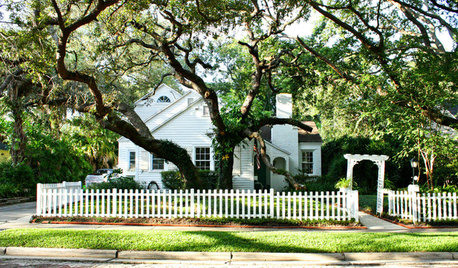Can I safely transplant a 7ft oak sapling?
chester_grant
12 years ago
Featured Answer
Comments (21)
hortster
12 years agoj0nd03
12 years agoRelated Professionals
Towson Landscape Architects & Landscape Designers · Hartford Landscape Contractors · Cary Landscape Contractors · Del Aire Landscape Contractors · Mason Landscape Contractors · Mequon Landscape Contractors · Wareham Landscape Contractors · Winchester Landscape Contractors · Kansas City Siding & Exteriors · Newington Siding & Exteriors · Yorkville Siding & Exteriors · Fresno Decks, Patios & Outdoor Enclosures · Lancaster Decks, Patios & Outdoor Enclosures · Midlothian Decks, Patios & Outdoor Enclosures · Santa Ana Decks, Patios & Outdoor Enclosuresbrandon7 TN_zone7
12 years agoken_adrian Adrian MI cold Z5
12 years agohortster
12 years agobrandon7 TN_zone7
12 years agolucky_p
12 years agobrandon7 TN_zone7
12 years agoken_adrian Adrian MI cold Z5
12 years agobrandon7 TN_zone7
12 years agoEmbothrium
12 years agoBarbara Danley
8 years agoken_adrian Adrian MI cold Z5
8 years agoBarbara Danley
8 years agoviper114
8 years agosam_md
8 years agobrandon7 TN_zone7
8 years agoBarbara Danley
8 years agobrandon7 TN_zone7
8 years agowisconsitom
8 years ago
Related Stories

LIFE10 Ways to Keep Your Home Safe While You're Traveling
Set off on your trip with peace of mind, knowing you've taken the right steps toward keeping your home secure
Full Story
LIFEHow Your Landscaping Can Keep Burglars Away
Prevent home break-ins with strategic landscaping and good practices instead of menacing — and maybe less effective — measures
Full Story
KITCHEN DESIGNTrending Now: 25 Kitchen Photos Houzzers Can’t Get Enough Of
Use the kitchens that have been added to the most ideabooks in the last few months to inspire your dream project
Full Story
HOUZZ TOURSWe Can Dream: An Expansive Tennessee Farmhouse on 750 Acres
Wood painstakingly reclaimed from old barns helps an 1800s farmhouse retain its history
Full Story
TREESGreat Design Plant: Southern Live Oak Offers an Unbeatable Canopy
Keep it dense or prune it for more light. No matter how you grow Quercus virginiana, it’s a majestic addition to its native landscape
Full Story
GARDENING AND LANDSCAPING7 Ideas to Get You Back on the Front Porch
Remember the good old days, when porches offered front-row seats to street scenes? They can be even better today
Full Story
WINTER GARDENINGHow to Help Your Trees Weather a Storm
Seeing trees safely through winter storms means choosing the right species, siting them carefully and paying attention during the tempests
Full Story
KITCHEN DESIGNKitchen of the Week: Industrial Design’s Softer Side
Dark gray cabinets and stainless steel mix with warm oak accents in a bright, family-friendly London kitchen
Full Story
LIGHTINGSo You Bought a Cave: 7 Ways to Open Your Home to Light
Make the most of the natural light your house does have — and learn to appreciate some shadows, too
Full Story
KITCHEN DESIGN16 Practical Ideas to Borrow From Professional Kitchens
Restaurant kitchens are designed to function efficiently and safely. Why not adopt some of their tricks in your own home?
Full StoryMore Discussions









Barbara Danley